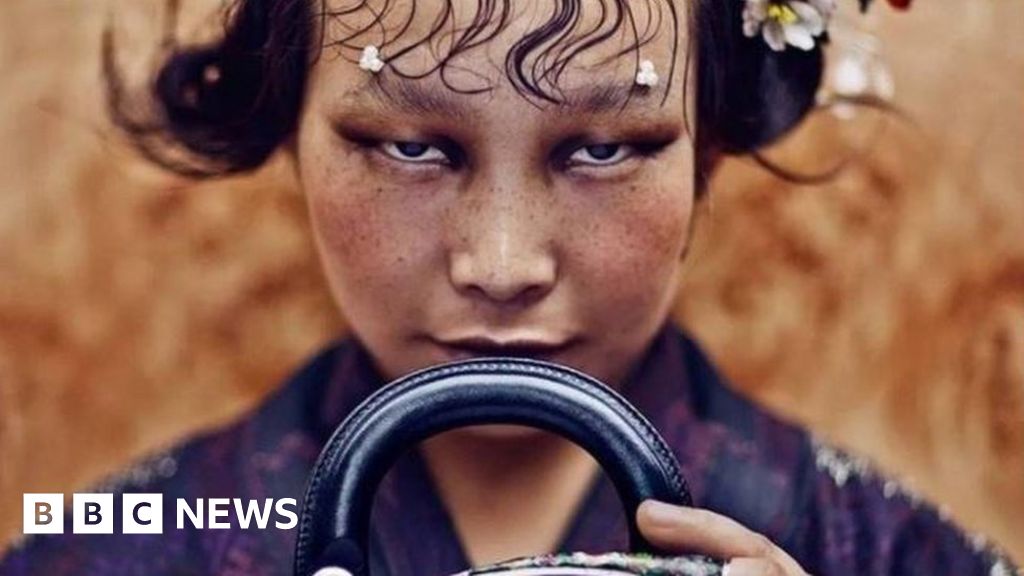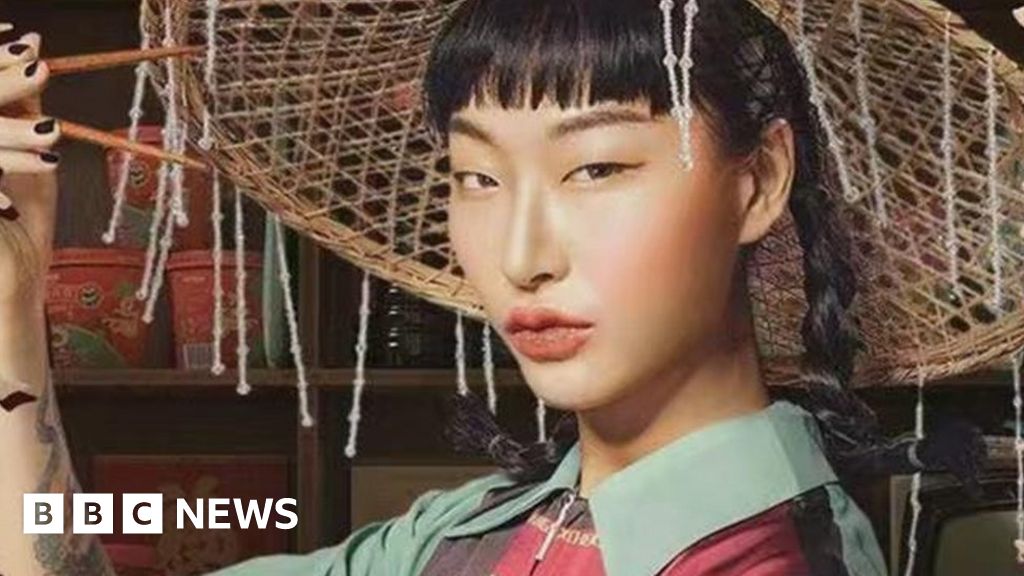Why do Asians have smaller eyes? This question has sparked curiosity and debates for years. Many people wonder if this physical characteristic is due to genetics, evolution, or cultural factors. Understanding the science behind this phenomenon can help dispel myths and promote greater cultural awareness.
Physical traits such as eye shape are influenced by a combination of genetic, evolutionary, and environmental factors. The shape of Asian eyes, often perceived as "smaller," is primarily determined by genetic variations that have been passed down through generations. This article aims to provide a comprehensive understanding of why this characteristic exists and address common misconceptions.
By exploring the science behind Asian eye shapes, we can foster a more inclusive and informed perspective. This knowledge not only enriches our understanding of human diversity but also helps combat stereotypes and promotes empathy across cultures.
Read also:The Tallest Women Basketball Players Celebrating Height And Skill
Table of Contents
- Genetic Factors Behind Asian Eye Shapes
- The Evolutionary Perspective on Asian Eyes
- Cultural Perception of Asian Eyes
- Biological Reasons for Smaller Eyes
- Common Myths and Facts About Asian Eyes
- Scientific Studies on Eye Shape Variations
- Plastic Surgery Trends in Asia
- Celebrity Influence on Beauty Standards
- Promoting Diversity in Beauty Standards
- Conclusion: Understanding and Appreciating Human Diversity
Genetic Factors Behind Asian Eye Shapes
One of the primary reasons why Asians have smaller eyes lies in genetics. The shape of the eye, including the presence of double eyelids or single eyelids, is determined by specific genetic variations. Research has shown that certain genes, such as the FGFR2 gene, play a significant role in the development of facial features, including eye shape.
Genetic Variations and Eye Shape
Genetic variations are responsible for the diversity in human appearance. In East Asian populations, a higher frequency of single eyelids is observed due to specific alleles that influence the development of the upper eyelid fold. This genetic predisposition results in a distinct eye shape that is often perceived as smaller.
- Single eyelids are more common in East Asian populations.
- Double eyelids are influenced by specific genetic markers.
- Genetic inheritance plays a crucial role in determining eye shape.
The Evolutionary Perspective on Asian Eyes
From an evolutionary standpoint, the physical characteristics of Asians, including smaller eyes, may have developed as adaptations to their environment. Historically, East Asian populations lived in regions with harsh climates, where certain traits provided survival advantages.
Environmental Adaptations
Smaller eyes and a thicker layer of fat around the eyes may have evolved as a response to cold climates. These adaptations help protect the eyes from harsh winds and reduce heat loss. Over thousands of years, these traits became more prevalent in the population due to natural selection.
Studies suggest that these evolutionary adaptations are not unique to Asians but can be observed in other populations living in similar environments.
Cultural Perception of Asian Eyes
Cultural perceptions of beauty have a significant impact on how Asian eyes are viewed. In many Western cultures, double eyelids are often considered more attractive, leading to stereotypes about Asian eyes being "small" or "narrow." These perceptions can perpetuate harmful stereotypes and contribute to cultural misunderstandings.
Read also:Mandy Patinkin Born A Deep Dive Into The Life And Career Of The Iconic Actor
Breaking Stereotypes
It is essential to recognize that beauty standards vary across cultures. What is considered attractive in one culture may not hold the same value in another. By embracing diversity and promoting inclusivity, we can challenge these stereotypes and celebrate the unique beauty of all individuals.
Biological Reasons for Smaller Eyes
From a biological perspective, the size and shape of the eyes are influenced by a combination of factors, including genetic predisposition and environmental influences. The structure of the eyelid, the amount of fat surrounding the eye, and the position of the orbital bone all contribute to the appearance of smaller eyes in Asians.
Key Biological Factors
- Thicker eyelid fat deposits in East Asian populations.
- Lower incidence of double eyelids compared to other ethnic groups.
- Differences in orbital bone structure affecting eye shape.
Common Myths and Facts About Asian Eyes
There are several myths surrounding Asian eyes that need to be addressed. Dispelling these misconceptions is crucial for fostering greater understanding and respect for cultural differences.
Myth: Smaller Eyes Indicate Poor Vision
This is a common misconception with no scientific basis. The size of the eyes does not correlate with vision quality. Asians, like people from other ethnic groups, can have excellent vision regardless of their eye shape.
Fact: Genetic Factors Influence Eye Shape
As discussed earlier, genetic variations are the primary determinant of eye shape in Asians. Understanding this fact helps combat stereotypes and promotes a more informed perspective on human diversity.
Scientific Studies on Eye Shape Variations
Several scientific studies have explored the genetic and biological factors influencing eye shape in different populations. These studies provide valuable insights into the mechanisms behind these variations and help explain why Asians have smaller eyes.
Key Findings
- Research published in the Journal of Human Genetics identified specific genetic markers associated with single and double eyelids.
- A study in Nature Genetics highlighted the role of environmental factors in shaping facial features.
- These studies emphasize the importance of genetic diversity in human populations.
Plastic Surgery Trends in Asia
In recent years, there has been a rise in cosmetic procedures aimed at altering eye shape, particularly double eyelid surgery. This trend reflects the influence of Western beauty standards on Asian populations. While some individuals choose these procedures for personal reasons, it is essential to recognize the cultural pressures driving this phenomenon.
Understanding the Motivation
Many people pursue cosmetic surgery to align with societal beauty ideals or enhance their self-confidence. However, it is crucial to respect individual choices and promote a positive body image regardless of cultural background.
Celebrity Influence on Beauty Standards
Celebrities often set trends and influence public perceptions of beauty. In Asia, many popular figures have undergone cosmetic procedures to achieve a desired eye shape. This influence can perpetuate certain beauty standards and impact how people view their own appearance.
Promoting Authentic Beauty
Encouraging celebrities and influencers to embrace their natural features can help shift societal norms and promote a more inclusive definition of beauty. By celebrating diversity, we can create a culture that values individuality and authenticity.
Promoting Diversity in Beauty Standards
It is essential to recognize and appreciate the diversity of human appearance. Beauty standards should not be limited to a single ideal but should embrace the unique characteristics of all individuals. By promoting inclusivity and cultural awareness, we can create a more harmonious and accepting society.
Tips for Promoting Diversity
- Encourage representation of diverse beauty in media and advertising.
- Support brands and organizations that celebrate individuality.
- Engage in conversations that challenge stereotypes and promote understanding.
Conclusion: Understanding and Appreciating Human Diversity
In conclusion, the question of why Asians have smaller eyes can be answered through a combination of genetic, evolutionary, and cultural factors. By understanding the science behind these physical characteristics, we can combat stereotypes and promote greater cultural awareness. It is crucial to recognize the beauty in diversity and celebrate the unique features that make each individual special.
We invite you to share your thoughts and experiences in the comments below. By engaging in open and respectful dialogue, we can continue to learn from one another and foster a more inclusive world. Don't forget to explore other articles on our site for more insights into human diversity and cultural understanding.


